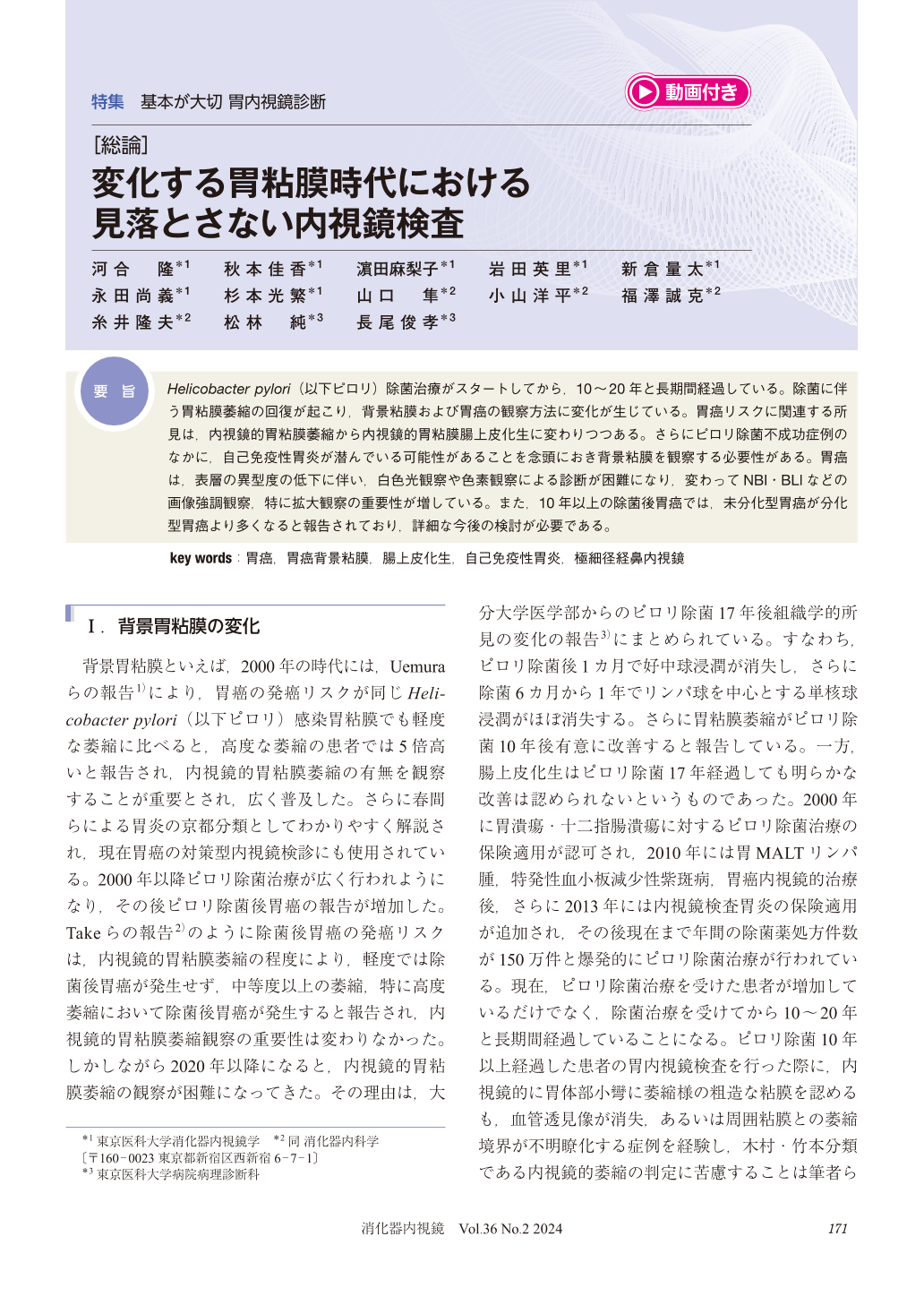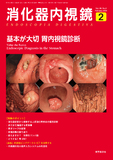Japanese
English
- 有料閲覧
- Abstract 文献概要
- 1ページ目 Look Inside
- 参考文献 Reference
要旨
Helicobacter pylori(以下ピロリ)除菌治療がスタートしてから,10~20年と長期間経過している。除菌に伴う胃粘膜萎縮の回復が起こり,背景粘膜および胃癌の観察方法に変化が生じている。胃癌リスクに関連する所見は,内視鏡的胃粘膜萎縮から内視鏡的胃粘膜腸上皮化生に変わりつつある。さらにピロリ除菌不成功症例のなかに,自己免疫性胃炎が潜んでいる可能性があることを念頭におき背景粘膜を観察する必要性がある。胃癌は,表層の異型度の低下に伴い,白色光観察や色素観察による診断が困難になり,変わってNBI・BLIなどの画像強調観察,特に拡大観察の重要性が増している。また,10年以上の除菌後胃癌では,未分化型胃癌が分化型胃癌より多くなると報告されており,詳細な今後の検討が必要である。
A long period of time (10-20 years) has passed since Helicobacter pylori (H. pylori) eradication therapy was initiated. The recovery from gastric mucosal atrophy associated with eradication has resulted in changes in the way the background mucosa and gastric cancer are observed. Findings related to gastric cancer risk are changing from endoscopic gastric mucosal atrophy to endoscopic gastric intestinal metaplasia. Furthermore, it is necessary to observe the background mucosa, bearing in mind that autoimmune gastritis may be latent in cases of unsuccessful H. pylori eradication. As the atypicality of the superficial layers of gastric cancer decreases, it becomes more difficult to diagnose gastric cancer by white light or dye-staining observation, and image-enhanced observation using method such as NBI and BLI, especially magnified observation, becomes more important. In addition, it has been reported that undifferentiated gastric cancer is more common than differentiated gastric cancer in gastric cancer patients more than 10 years after eradication, and detailed future studies are needed.

© tokyo-igakusha.co.jp. All right reserved.


